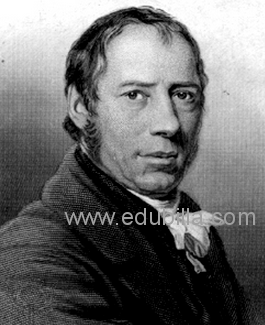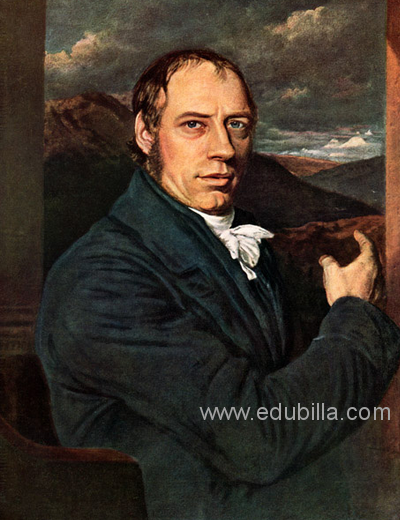










Richard Trevithick was a British inventor and mining engineer from Cornwall, UK.Born in the mining heartland of Cornwall, Trevithick was immersed in mining and engineering from a young age. The son of a mining captain, he performed poorly in school, but went on to be an early pioneer of steam-powered road and rail transport. His most significant contribution was to the development of the first high-pressure steam engine. He also built the first full-scale working railway steam locomotive. On 21 February 1804 the world's first locomotive-hauled railway journey took place as Trevithick's unnamed steam locomotive hauled a train along the tramway of the Penydarren Ironworks, in Merthyr Tydfil, Wales.
Turning his interests abroad, Trevithick also worked as a mining consultant in Peru and later explored parts of Costa Rica. Throughout his professional career, he went through many ups and downs, and at one point faced financial ruin, also suffering from the strong rivalry of many mining and steam engineers of the day. During the prime of his career, he was a well-respected and known figure in mining and engineering, but near the end of his life and after he fell out of the public eye.
Early life
Richard Trevithick was born at Tregajorran (in the parish of Illogan), between Camborne and Redruth, in the heart of one of the rich mineral mining areas of Cornwall. He was the youngest-but-one child and the only boy in a family of six children. He was very tall for the era at 6 ft 2in, as well as athletic and concentrated more on sport than schoolwork. Sent to the village school at Camborne, he did not take much advantage of the education provided – one of his school masters described him as "a disobedient, slow, obstinate, spoiled boy, frequently absent and very inattentive". An exception was arithmetic, for which he had an aptitude, but arrived at the correct answers by unconventional means.
Trevithick was the son of mine "captain" Richard Trevithick (1735–1797) and of miner's daughter Ann Teague (died 1810). As a child he would watch steam engines pump water from the deep tin and copper mines in Cornwall. For a time he was a neighbour to William Murdoch, the steam carriage pioneer, and would have been influenced by his experiments with steam-powered road locomotion.
Trevithick first went to work at the age of 19 at the East Stray Park Mine. He was enthusiastic and quickly gained the status as a consultant, unusual for such a young person. He was popular with the miners because of the respect they had for his father.
Career
Jane's father, John Harvey, formerly a blacksmith from Carnhell Green, formed the local foundry, Harveys of Hayle. His company became famous worldwide for building huge stationary "beam" engines for pumping water, usually from mines, based on Newcomen's and Watt's engines.
Until this time, such steam engines were of the condensing or atmospheric type, originally invented by Thomas Newcomen in 1712, and which also became known as low-pressure engines. James Watt, on behalf of his partnership with Matthew Boulton, held a number of patents for improving the efficiency of Newcomen's engine, including the "separate condenser patent" – which proved the most contentious.
Trevithick became engineer at the Ding Dong Mine in 1797, and there (in conjunction with Edward Bull) he pioneered the use of high-pressure steam. He worked on building and modifying steam engines to avoid the royalties due to Watt on the separate condenser patent. At Ding Dong Boulton and Watt served an injunction on him and posted it "on the minestuffs" and "most likely on the door" of the Count (Account) House which, although now a ruin, is the only surviving building from Trevithick's time at Ding Dong.
He also experimented with the plunger-pole pump, a type of pump – with a beam engine – used widely in Cornwall's tin mines, in which he reversed the plunger to change it into a water-power engine.
The high-pressure engine
As his experience grew, he realised that improvements in boiler technology now permitted the safe production of high-pressure steam, which could move a piston in a steam engine on its own account, instead of using pressure near to atmospheric in a condensing engine.
He was not the first to think of so-called "strong steam". William Murdoch had developed and demonstrated a model steam carriage, starting in 1784, and demonstrated it to Trevithick at his request in 1794. In fact, Trevithick lived next door to Murdoch in Redruth in 1797 and 1798. Oliver Evans in the U.S. had also concerned himself with the concept, but there is no indication that his ideas had ever come to Trevithick's attention.
Independently of this, Arthur Woolf was experimenting with higher pressures whilst working as the Chief Engineer of the Griffin Brewery (proprietors Meux and Reid). This was an Engine designed by Hornblower and Maberly, and the proprietors were keen to have the best steam engine in London. Around 1796, Woolf believed he could save substantial amounts of coal consumption.
According to his son Francis, Trevithick was the first to make high-pressure steam work in England in 1799. Not only would a high-pressure steam engine eliminate the condenser, but it would allow the use of a smaller cylinder, saving space and weight. He reasoned that his engine could now be more compact, lighter and small enough to carry its own weight even with a carriage attached.

